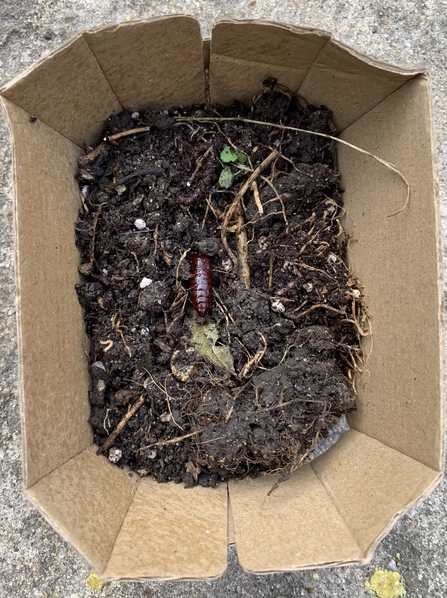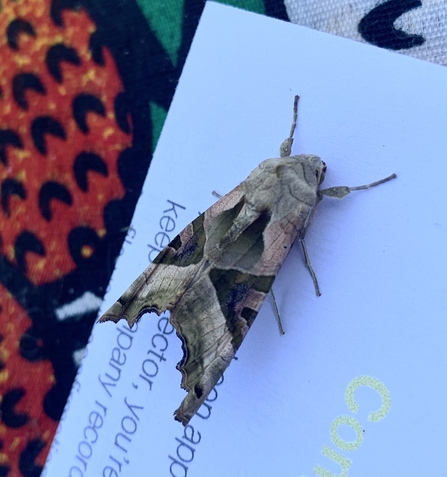Around three weeks ago, whilst tending my garden, I spotted a moth pupa tucked away in a plant pot. I decided to bring it indoors and nurture it to see what species would emerge (usually in around 20 days or so). It's difficult to tell a species from a pupa as they all look remarkably similar so if you want to study the form and watch which moth emerges then keeping it at home is a good way to learn. I placed the pupa in a small cardboard container with rich soil and each morning lightly sprayed the pupa and the soil to keep both moist.
Nurturing Nature: the story of a moth pupa

On Sunday 26th April I came downstairs as usual, spray in hand, ready to spritz the pupa and to my surprise the husk was open at one end. I perused the room and saw that the moth had tucked itself in the corner of the window and was dormant. What a beautiful moth it was, identified as an angle shades.

After a quick photoshoot the moth was then tucked under a small bush outside ready for their first night out on the town, the lucky thing! Angle shades moths are common and well distributed throughout Britain and are found in a variety of habitats including gardens, hedgerows, fens and woodland. An unmistakable and distinctive moth with pinkish-brown markings, its wings are folded along the body at rest which gives the impression of a withered autumn leaf.

Please note that London Wildlife Trust do not encourage any captive breeding of moths or butterflies
Sunitha Amos is Community Engagement Officer for the Brilliant Butterflies project, which is delivered in partnership with Natural History Museum and Butterfly Conservation, funded by a Dream Fund Award, thanks to players of People’s Postcode Lottery

